- Home
- Anne Bishop
Vision in Silver
Vision in Silver Read online
BOOKS BY ANNE BISHOP
THE OTHERS SERIES
Written in Red
Murder of Crows
Vision in Silver
THE BLACK JEWELS SERIES
Daughter of the Blood
Heir to the Shadows
Queen of the Darkness
The Invisible Ring
Dreams Made Flesh
Tangled Webs
The Shadow Queen
Shalador’s Lady
Twilight’s Dawn
THE EPHEMERA SERIES
Sebastian
Belladonna
Bridge of Dreams
THE TIR ALAINN TRILOGY
The Pillars of the World
Shadows and Light
The House of Gaian
ROC
Published by the Penguin Group
Penguin Group (USA) LLC, 375 Hudson Street,
New York, New York 10014
USA | Canada | UK | Ireland | Australia | New Zealand | India | South Africa | China
penguin.com
A Penguin Random House Company
First published by Roc, an imprint of New American Library,
a division of Penguin Group (USA) LLC
Copyright © Anne Bishop, 2015
Penguin supports copyright. Copyright fuels creativity, encourages diverse voices, promotes free speech, and creates a vibrant culture. Thank you for buying an authorized edition of this book and for complying with copyright laws by not reproducing, scanning, or distributing any part of it in any form without permission. You are supporting writers and allowing Penguin to continue to publish books for every reader.
REGISTERED TRADEMARK—MARCA REGISTRADA
LIBRARY OF CONGRESS CATALOGING-IN-PUBLICATION DATA:
Bishop, Anne.
Vision in silver / Anne Bishop.
pages cm.— (A novel of the others; 3)
ISBN 978-1-101-63511-7
1. Women prophets—Fiction. 2. Shapeshifting—Fiction. I. Title.
PS3552.I7594V57 2015
813'.54—dc23 2014034235
PUBLISHER’S NOTE
This is a work of fiction. Names, characters, places, and incidents either are the product of the author’s imagination or are used fictitiously, and any resemblance to actual persons, living or dead, business establishments, events, or locales is entirely coincidental.
Version_1
Contents
Books by ANNE BISHOP
Title page
Copyright page
Dedication
Acknowledgments
Geography
Map of Lakeside
Map of Lakeside Courtyard
A Brief History of the World
CHAPTER 1
CHAPTER 2
CHAPTER 3
CHAPTER 4
CHAPTER 5
CHAPTER 6
CHAPTER 7
CHAPTER 8
CHAPTER 9
CHAPTER 10
CHAPTER 11
CHAPTER 12
CHAPTER 13
CHAPTER 14
CHAPTER 15
CHAPTER 16
CHAPTER 17
CHAPTER 18
CHAPTER 19
CHAPTER 20
CHAPTER 21
CHAPTER 22
CHAPTER 23
CHAPTER 24
CHAPTER 25
CHAPTER 26
CHAPTER 27
CHAPTER 28
CHAPTER 29
CHAPTER 30
CHAPTER 31
CHAPTER 32
CHAPTER 33
CHAPTER 34
CHAPTER 35
CHAPTER 36
CHAPTER 37
CHAPTER 38
CHAPTER 39
CHAPTER 40
CHAPTER 41
CHAPTER 42
CHAPTER 43
CHAPTER 44
CHAPTER 45
CHAPTER 46
CHAPTER 47
CHAPTER 48
CHAPTER 49
CHAPTER 50
CHAPTER 51
CHAPTER 52
CHAPTER 53
CHAPTER 54
CHAPTER 55
CHAPTER 56
CHAPTER 57
CHAPTER 58
For
Jennifer Crow
ACKNOWLEDGMENTS
My thanks to Blair Boone for continuing to be my first reader and for all the information about animals and other things that I absorbed and transformed to suit the Others’ world; to Debra Dixon for being second reader and providing insights about police procedures; to Doranna Durgin for maintaining the Web site; to Adrienne Roehrich for running the official fan page on Facebook; to Nadine Fallacaro for information about things medical; to Anne Sowards and Jennifer Jackson for the feedback that helps me write a better story; to Jennifer Crow for the monthly gatherings and the gleeful exchange of information about many, many subjects; and to Pat Feidner for always being supportive and encouraging.
A special thanks to the following people who loaned their names to characters, knowing that the name would be the only connection between reality and fiction: Bobbie Barber, Elizabeth Bennefeld, Blair Boone, Douglas Burke, Starr Corcoran, Jennifer Crow, Lorna MacDonald Czarnota, Julie Czerneda, Roger Czerneda, Merri Lee Debany, Michael Debany, Mary Claire Eamer, Sarah Jane Elliott, Chris Fallacaro, Dan Fallacaro, Mike Fallacaro, Nadine Fallacaro, James Alan Gardner, Mantovani “Monty” Gay, Julie Green, Lois Gresh, Ann Hergott, Lara Herrera, Robert Herrera, Danielle Hilborn, Heather Houghton, Pamela Ireland, Lorne Kates, Allison King, Jana Paniccia, Jennifer Margaret Seely, Denby “Skip” Stowe, Ruth Stuart, and John Wulf.
Geography
Namid—The World
Continents/Landmasses
Afrikah
Australis
Brittania/Wild Brittania
Cel-Romano/Cel-Romano Alliance of Nations
Felidae
Fingerbone Islands
Storm Islands
Thaisia
Tokhar-Chin
Zelande
Great Lakes—Superior, Tala, Honon, Etu, and Tahki
Other lakes—Feather Lakes/Finger Lakes
River—Talulah/Talulah Falls
Mountains—Addirondak, Rocky
Cities and villages—Ferryman’s Landing, Hubb NE (aka Hubbney), Jerzy, Lakeside, Podunk, Shikago, Sparkletown, Sweetwater, Talulah Falls, Toland, Walnut Grove, Wheatfield
Days of the Week
Earthday
Moonsday
Sunsday
Windsday
Thaisday
Firesday
Watersday
A Brief History of the World
Long ago, Namid gave birth to all kinds of life, including the beings known as humans. She gave the humans fertile pieces of herself, and she gave them good water. Understanding their nature and the nature of her other offspring, she also gave them enough isolation that they would have a chance to survive and grow. And they did.
They learned to build fires and shelters. They learned to farm and build cities. They built boats and fished in the Mediterran and Black seas. They bred and spread throughout their pieces of the world until they pushed into the wild places. That’s when they discovered that Namid’s other offspring already claimed the rest of the world.
The Others looked at humans and did not see conquerors. They saw a new kind of meat.
> Wars were fought to possess the wild places. Sometimes the humans won and spread their seed a little farther. More often, pieces of civilization disappeared, and fearful survivors tried not to shiver when a howl went up in the night or a man, wandering too far from the safety of stout doors and light, was found the next morning drained of blood.
Centuries passed, and the humans built larger ships and sailed across the Atlantik Ocean. When they found virgin land, they built a settlement near the shore. Then they discovered that this land was also claimed by the terra indigene, the earth natives. The Others.
The terra indigene who ruled the continent called Thaisia became angry when the humans cut down trees and put a plow to land that was not theirs. So the Others ate the settlers and learned the shape of this particular meat, just as they had done many times in the past.
The second wave of explorers and settlers found the abandoned settlement and, once more, tried to claim the land as their own.
The Others ate them too.
The third wave of settlers had a leader who was smarter than his predecessors. He offered the Others warm blankets and lengths of cloth for clothes and interesting bits of shiny in exchange for being allowed to live in the settlement and have enough land to grow crops. The Others thought this was a fair exchange and walked off the boundaries of the land that the humans could use. More gifts were exchanged for hunting and fishing privileges. This arrangement satisfied both sides, even if one side regarded its new neighbors with snarling tolerance and the other side swallowed fear and made sure its people were safely inside the settlement’s walls before nightfall.
Years passed and more settlers arrived. Many died, but enough humans prospered. Settlements grew into villages, which grew into towns, which grew into cities. Little by little, humans moved across Thaisia, spreading out as much as they could on the land they were allowed to use.
Centuries passed. Humans were smart. So were the Others. Humans invented electricity and plumbing. The Others controlled all the rivers that could power the generators and all the lakes that supplied fresh drinking water. Humans invented steam engines and central heating. The Others controlled all the fuel needed to run the engines and heat the buildings. Humans invented and manufactured products. The Others controlled all the natural resources, thereby deciding what would and wouldn’t be made in their part of the world.
There were collisions, of course, and some places became dark memorials for the dead. Those memorials finally made it clear to human government that the terra indigene ruled Thaisia, and nothing short of the end of the world would change that.
So it comes to this current age. Small human villages exist within vast tracts of land that belong to the Others. And in larger human cities, there are fenced parks called Courtyards that are inhabited by the Others who have the task of keeping watch over the city’s residents and enforcing the agreements the humans made with the terra indigene.
There is still sharp-toothed tolerance on one side and fear of what walks in the dark on the other. But if they are careful, the humans survive.
Most of the time, they survive.
CHAPTER 1
Thaisday, Maius 10
Meg Corbyn entered the bathroom in the Human Liaison’s Office and laid out the items she’d labeled the tools of prophecy: antiseptic ointment, bandages, and the silver folding razor decorated with pretty leaves and flowers on one side of the handle. On the other side of the handle, engraved in plain lettering, was the designation cs759. For twenty-four years, that designation had been the closest thing she’d had to a name.
She had a name now and a real apartment instead of a sterile cell. In the compound where she had been raised and trained . . . and used . . . she’d had one friend: Jean, the girl who wouldn’t allow anyone to forget that she’d once had a home and a family outside the compound—the girl who had helped Meg escape.
Now Meg had many friends, and it didn’t matter to her that most of them weren’t human. The terra indigene had given her a chance to have a life, were helping her find ways to live with the addiction that would eventually kill her. But Simon Wolfgard, leader of the Lakeside Courtyard, insisted he’d seen someone like her who had survived long enough to become an old woman.
She wanted to believe that was possible. She hoped this morning’s experiment might provide a clue to how it was possible.
After checking to make sure she hadn’t forgotten anything they would need, Meg sat on the closed toilet seat and waited for Merri Lee, the human friend who was learning to work as her listener and interpreter.
The cassandra sangue saw prophecies when their skin was cut. They were trained to describe the visions and images. But the girls weren’t taught how to interpret what they saw. That would have been pointless. The moment a girl began to speak, a euphoria filled her, veiling her mind and protecting her from what those images revealed. In fact, the only way a blood prophet could remember what she saw was to keep silent. If she didn’t say the words out loud, she remembered what she saw.
It took a particular kind of determination—or desperation—to endure the agony that filled a girl when she didn’t speak after her skin was cut. And experiencing the euphoria that was almost orgasmic was the whole reason cassandra sangue became addicted to the cutting in the first place.
It took a particular kind of courage to acknowledge that she couldn’t completely escape the addiction after so many years of being cut on a regular schedule for someone else’s profit. The prophecies inside her would not be denied. Whether she wanted to or not, Meg needed to cut.
That was the reason today’s appointment with the razor was so important. She wasn’t experiencing the pins-and-needles feeling that indicated something was going to happen. Nothing pushed at her, and that made this morning the perfect time to discover what happened when she made a controlled cut.
The back door of the office opened. A moment later, Merri Lee stood in the bathroom doorway holding a small pad of paper and a pen.
They were both petite women around the same age, and both had fair skin. But Merri Lee had dark eyes and dark, layered hair that fell below her shoulders, while Meg had clear gray eyes and short black hair that was still mostly a weird orangey red from her efforts to disguise herself when she’d run away from the man known as the Controller.
“Are you sure about this?” Merri Lee asked. “Maybe we should wait until Simon and Henry get back from Great Island.”
Meg shook her head. “We should do this now, before the office opens and there’s additional . . . input . . . that might change what I see. Vlad is working at Howling Good Reads today. We can tell him about the prophecy—and he’s close enough if we need help.”
“All right.” Merri Lee pulled over a chair from the little dining area, set it just outside the bathroom doorway, and sat down. “What should I ask you?”
Meg had thought about this. When clients had come to the Controller’s compound, they had a specific question. She wasn’t looking for anything that defined, but she needed some kind of boundary. “This is what you should ask: What should the residents of the Lakeside Courtyard watch for during the next fortnight?”
“That’s pretty vague,” Merri Lee said. “And . . . fortnight?”
“If I ask about a specific thing in the Courtyard, something else might be overlooked—and that might be the important thing the Others should know about,” Meg replied. “Two weeks is enough time. As for ‘fortnight,’ I just learned that word and like the sound of it. I think it fits in with prophecies better than saying ‘two weeks.’”
“But if this doesn’t work, if we don’t get anything useful, then you’ve made the cut for nothing,” Merri Lee argued.
“Not for nothing,” Meg said. The euphoria was reason enough to cut. That wasn’t something she would say to her friend, so she offered a different truth. “If I can stretch out the time between cuts because one cut will supply
the warnings we need for two weeks and quiet the pins-and-needles feeling that pushes me to cut, I’ll have more years to live. And I do want to live—especially now that I have a real life.”
A beat of silence. Then Merri Lee said, “Ready?”
“Yes.” Opening the silver razor, Meg laid the blade flat against her skin, its one-quarter-inch width providing the perfect distance between cuts—the distance that kept prophecies separated without wasting valuable skin. She lined up the back of the blade with the last scar on her left forearm. Then she turned her hand and cut just deeply enough for blood to flow freely and, equally important, for the cut to leave a scar.
Agony filled her, the prelude to prophecy. Hearing someone crying—someone no one else could hear—Meg gritted her teeth, set the razor aside, and positioned her arm to rest in the bathroom sink. Then she gave Merri Lee a sharp nod.
“What should the residents of the Lakeside Courtyard watch for during the next fortnight?” Merri Lee said. “Speak, prophet, and I will listen.”
She spoke, revealing everything she saw. The images faded with the sound of the words as waves of euphoria produced a delicious tingle in her breasts and a rhythmic tug between her legs, replacing the pain.
She didn’t know how long she floated on the pleasure produced by the euphoria. Sometimes it seemed to fade within moments of identifying the last image, while at other times she drifted for a while in a haze of physical pleasure. When she became aware of her surroundings again, Meg realized enough time had passed that Merri Lee had bandaged the cut, cleaned the razor, and washed the sink.
The blood of the cassandra sangue was dangerous to humans and Others alike. It had been used to make gone over wolf and feel-good, two drugs that had caused so much trouble throughout Thaisia in the past few months. That was the reason why, when they made plans for this cut, she and Merri Lee agreed that all the blood would be washed away, and the bandages would be collected later and taken to the Courtyard’s Utilities Complex for incineration.
“Did it work?” Meg asked. “Did I speak prophecy? Did I see anything useful?” Her voice sounded rough, and her throat hurt. She wanted to ask Merri Lee for a glass of water or maybe some juice, but she couldn’t rouse herself enough to say anything more.

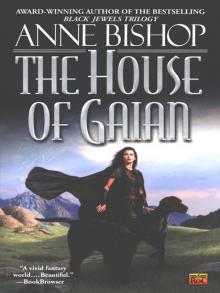 The House of Gaian
The House of Gaian Heir to the Shadows
Heir to the Shadows Queen of the Darkness
Queen of the Darkness Shaladors Lady
Shaladors Lady Written in Red
Written in Red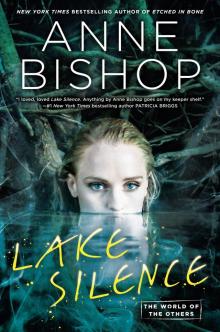 Lake Silence
Lake Silence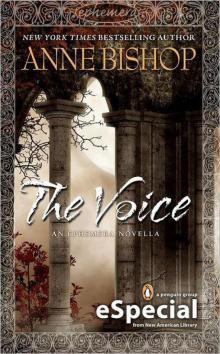 The Voice
The Voice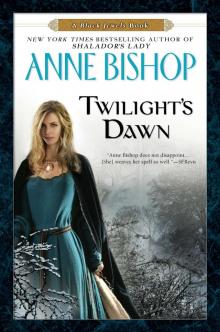 Twilights Dawn
Twilights Dawn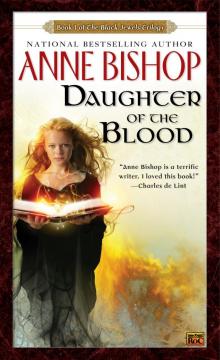 Daughter of the Blood
Daughter of the Blood Dreams Made Flesh
Dreams Made Flesh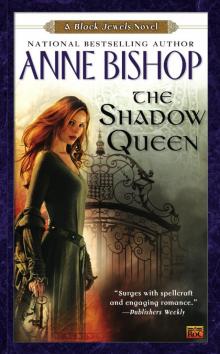 The Shadow Queen
The Shadow Queen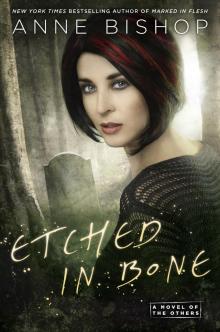 Etched in Bone
Etched in Bone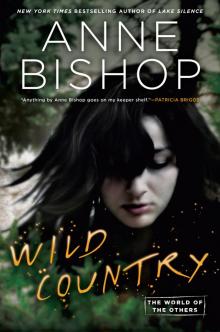 Wild Country
Wild Country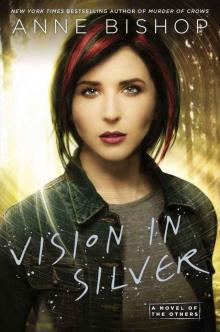 Vision in Silver
Vision in Silver Sebastian
Sebastian Shadows and Light
Shadows and Light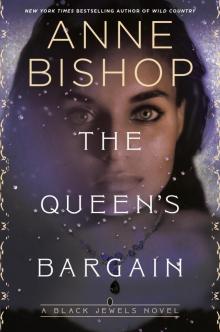 The Queen's Bargain
The Queen's Bargain Bridge of Dreams
Bridge of Dreams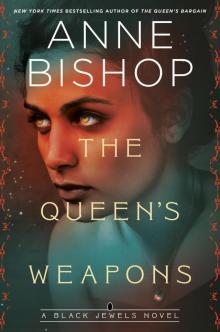 The Queen's Weapons
The Queen's Weapons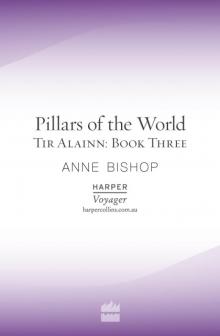 Pillars of the World
Pillars of the World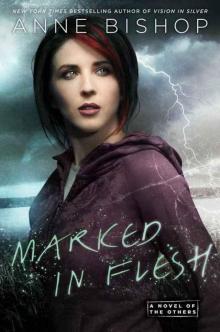 Marked in Flesh
Marked in Flesh Heir to the Shadows dj-2
Heir to the Shadows dj-2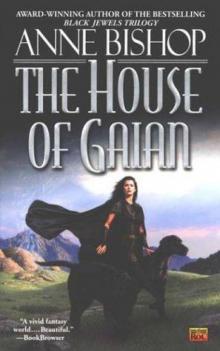 The House of Gaian ta-3
The House of Gaian ta-3 Marked In Flesh (The Others #4)
Marked In Flesh (The Others #4) Dreams Made Flesh bj-5
Dreams Made Flesh bj-5 Written In Red: A Novel of the Others
Written In Red: A Novel of the Others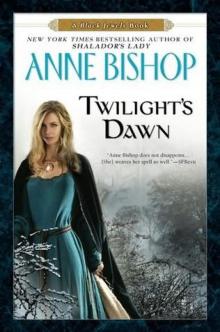 Twilight's Dawn dj-9
Twilight's Dawn dj-9 Shalador's Lady bj-8
Shalador's Lady bj-8 The Pillars of the World
The Pillars of the World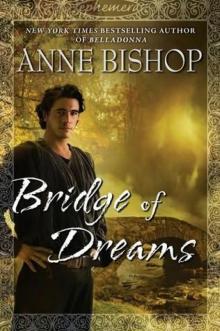 Bridge of Dreams e-3
Bridge of Dreams e-3 Tangled Webs bj-6
Tangled Webs bj-6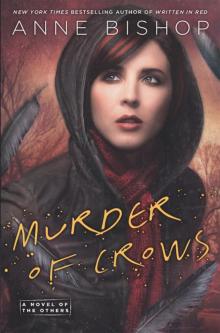 Murder of Crows: A Novel of the Others
Murder of Crows: A Novel of the Others Sebastian e-1
Sebastian e-1 Queen of the Darkness bj-3
Queen of the Darkness bj-3 Belladonna e-2
Belladonna e-2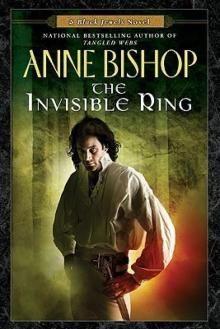 The Invisible Ring bj-4
The Invisible Ring bj-4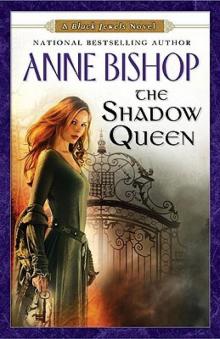 The Shadow Queen bj-7
The Shadow Queen bj-7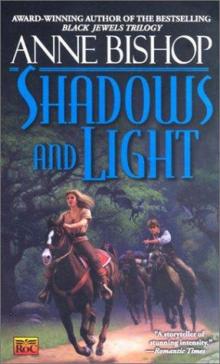 Shadows and Light ta-2
Shadows and Light ta-2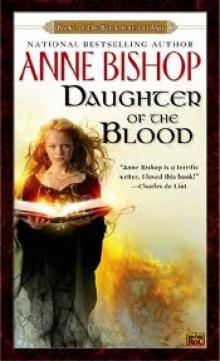 Daughter of the Blood bj-1
Daughter of the Blood bj-1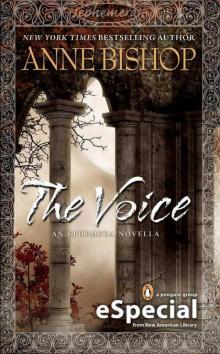 The Voice: An Ephemera Novella(An eSpecial from Roc)
The Voice: An Ephemera Novella(An eSpecial from Roc)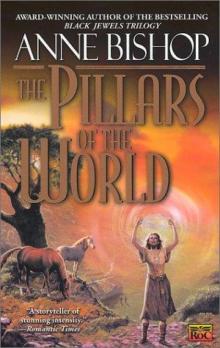 The Pillars of the World ta-1
The Pillars of the World ta-1